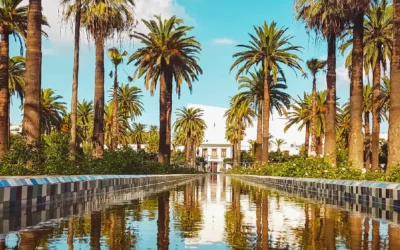Fes / Fez: The Timeless City of Morocco
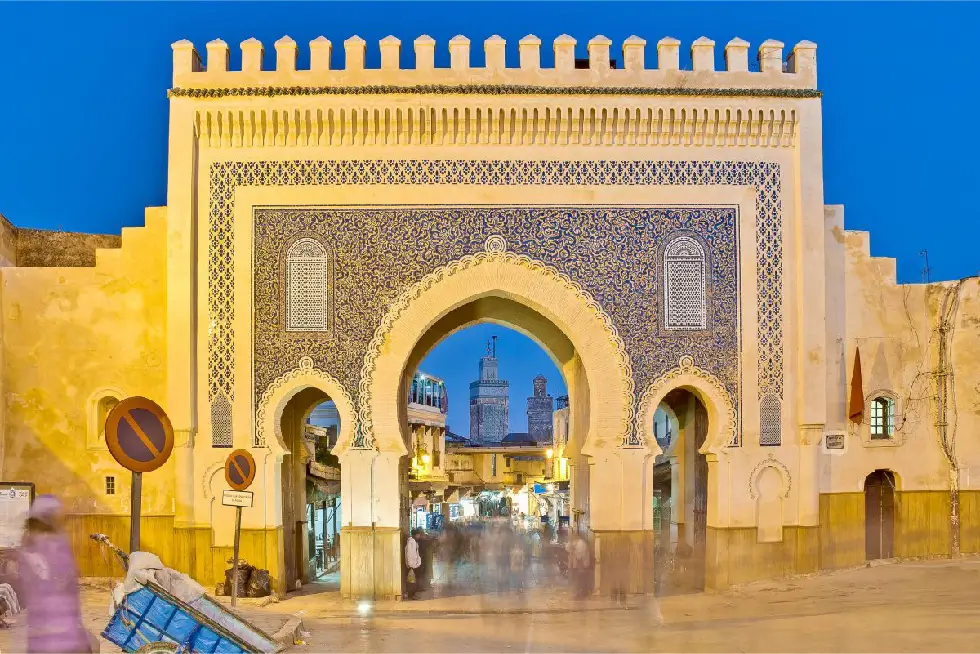
Table of Contents:
Introduction to Fes / Fez
Fes, often referred to as Fez, stands as the second-largest city in Morocco, it holds a prestigious position as one of Morocco’s four imperial cities, alongside Marrakech, Meknes, and Rabat.
Situated in northern inland Morocco, Fes is located in the northwest of the Atlas Mountains, serving as a testament to the nation’s rich historical tapestry. it was founded around 789 by Idris I on the banks of the Wadi Fes.
As the helm of the Fès-Meknès administrative region, Fes not only basks in its historical grandeur but also in its contemporary relevance within Morocco’s administrative landscape.
Fes Tour Guide
Fes City, a gem in Morocco, offers a myriad of attractions and activities that reflect its rich history, stunning architecture, and vibrant culture. This guide will take you through some of the top recommendations to ensure a memorable visit.
Fes el Bali – A World Heritage Site
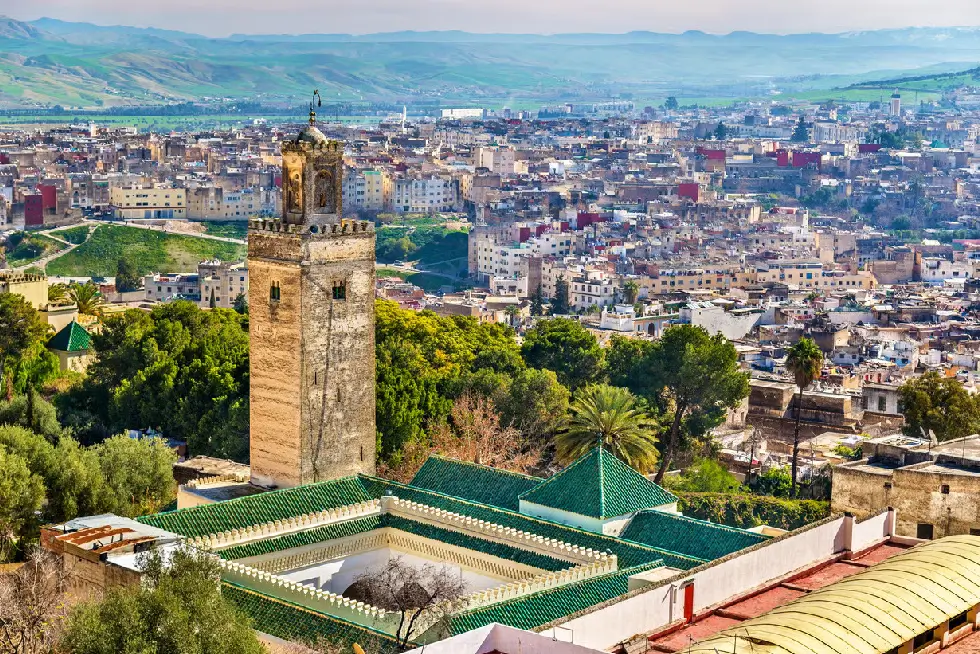
- World’s Largest Pedestrian Zone: The Medina, known as Fes el Bali, is famous for being the largest car-free urban area, with a labyrinth of over 9,000 alleys.
- UNESCO World Heritage Site: It’s a treasure trove of historic buildings, museums, and lively markets.
Bab Boujloud Gate
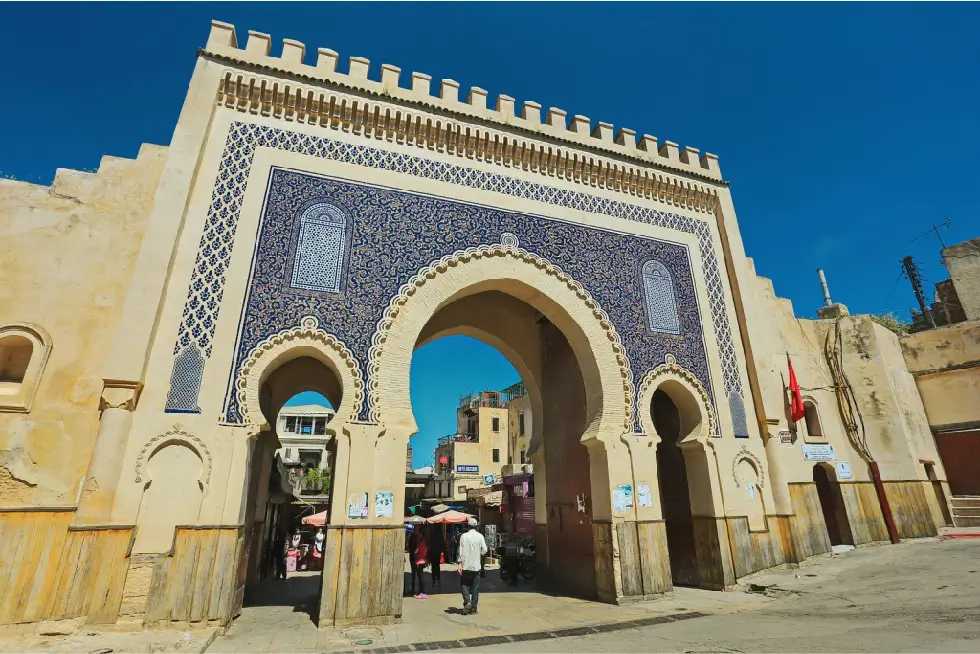
The Bab Boujloud Gate, an emblematic 1913 gateway adorned with blue and green tiles, epitomizes the fusion of Moroccan and Andalusian architecture in Fes.
Al-Andalus Mosque
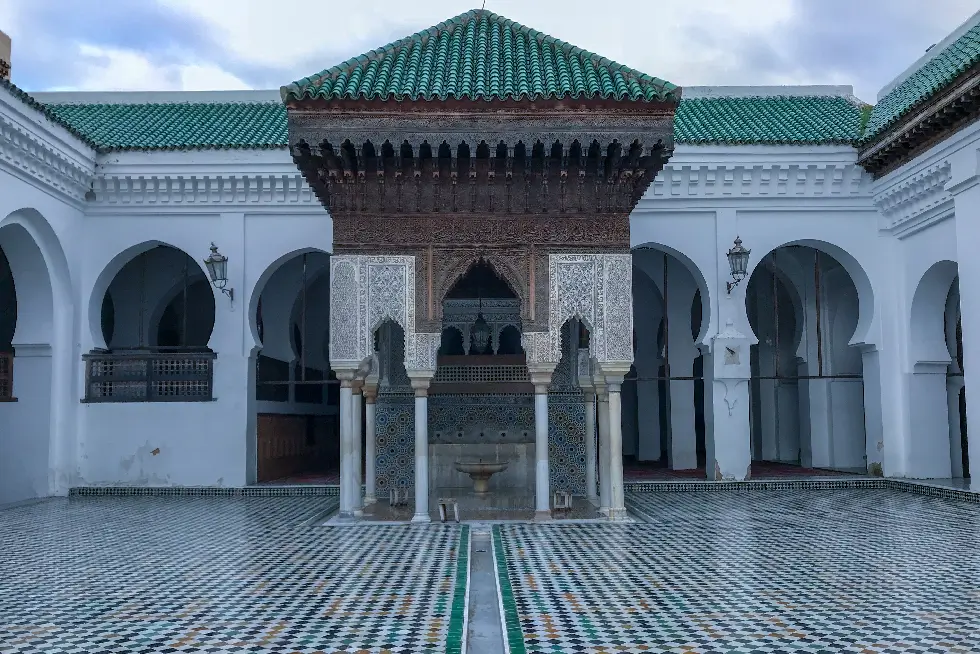
The Al-Andalus Mosque in Fes stands as a remarkable symbol of the rich Islamic history and architectural heritage of Morocco. Originally built in the 9th century, it reflects the enduring artistry and spiritual significance of the Moorish era.
Medersa Bou Inania

- An Architectural Masterpiece (1350-1357): Celebrated for its extraordinary stucco decorations, intricate woodwork, and zellige tilework.
Medersa el-Attarine
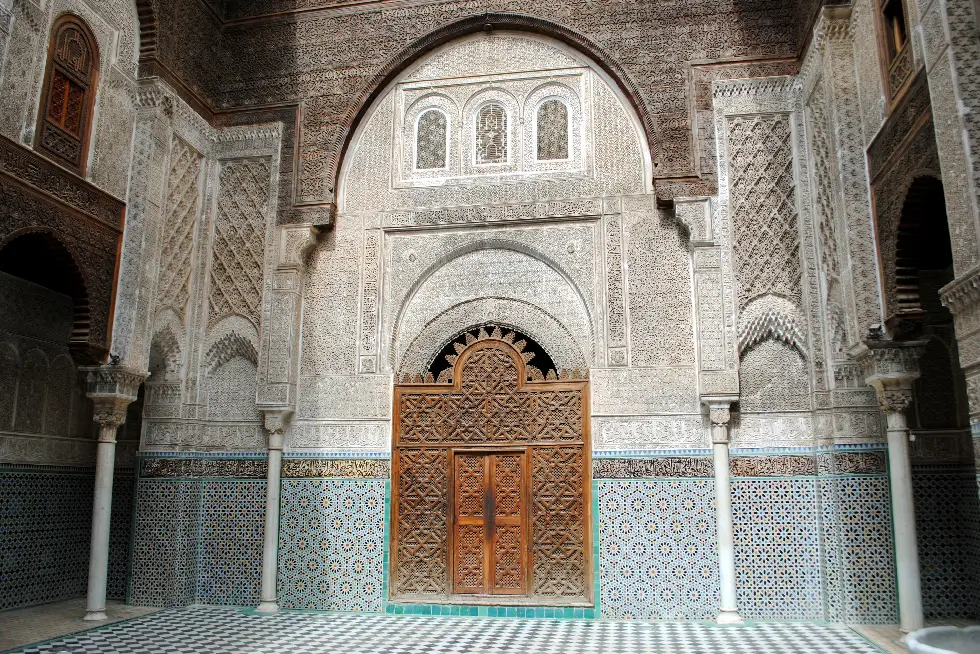
- A Glimpse into Merenid-era Architecture (1325): Offers panoramic views over Fes, including the Qaraouiyine Mosque’s tiled roof.
Dar Batha Museum
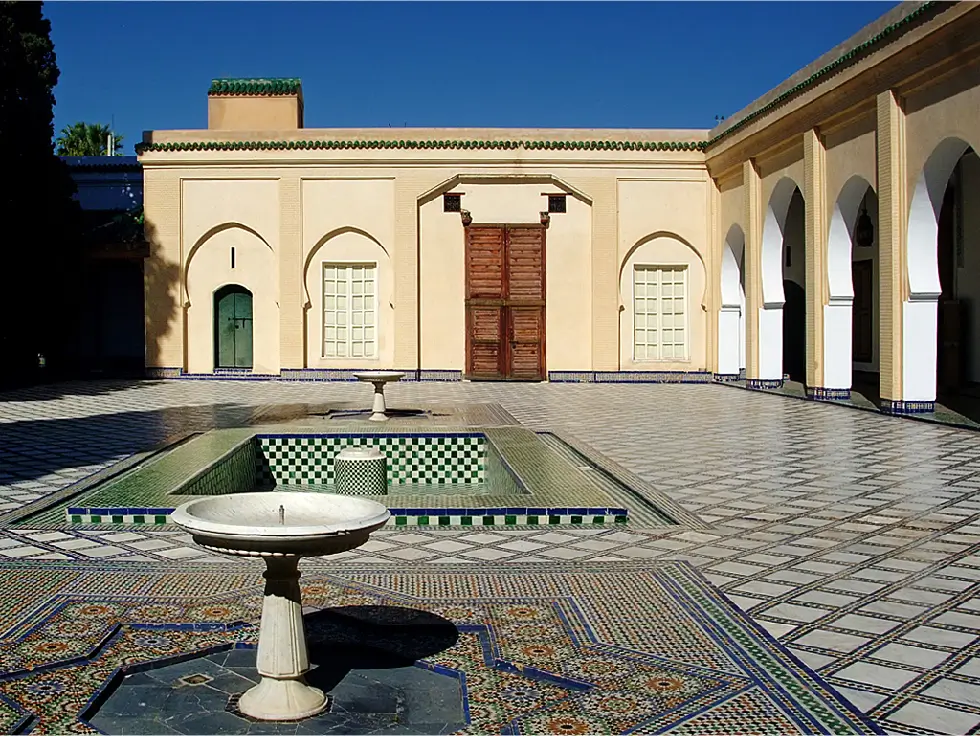

- Art in a Former Palace: This museum showcases Moroccan art, such as ceramics, woodwork, and textiles.
Royal Palace of Fes (Dar el Makhzen)
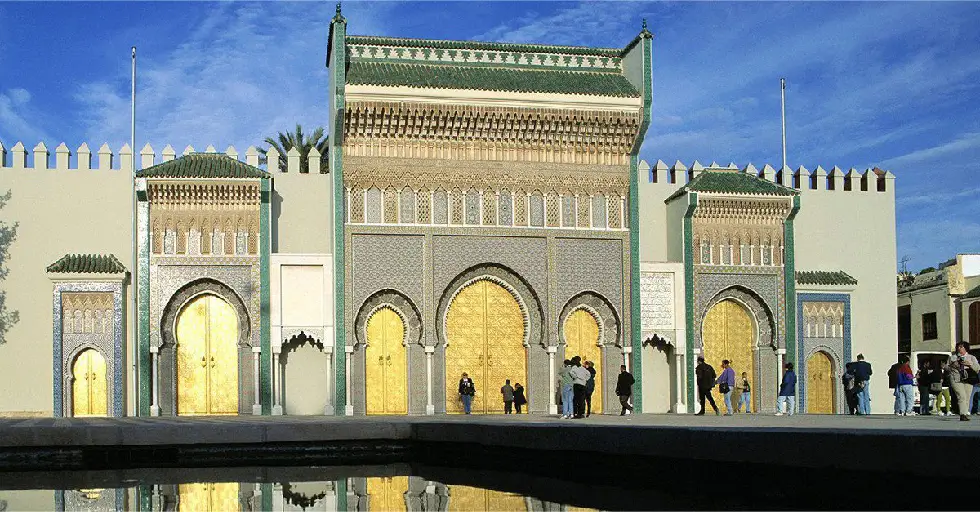

- Photogenic Golden Gates: While entry is restricted, the palace gates and nearby areas are great for exploring and photography.
Chouara Tannery
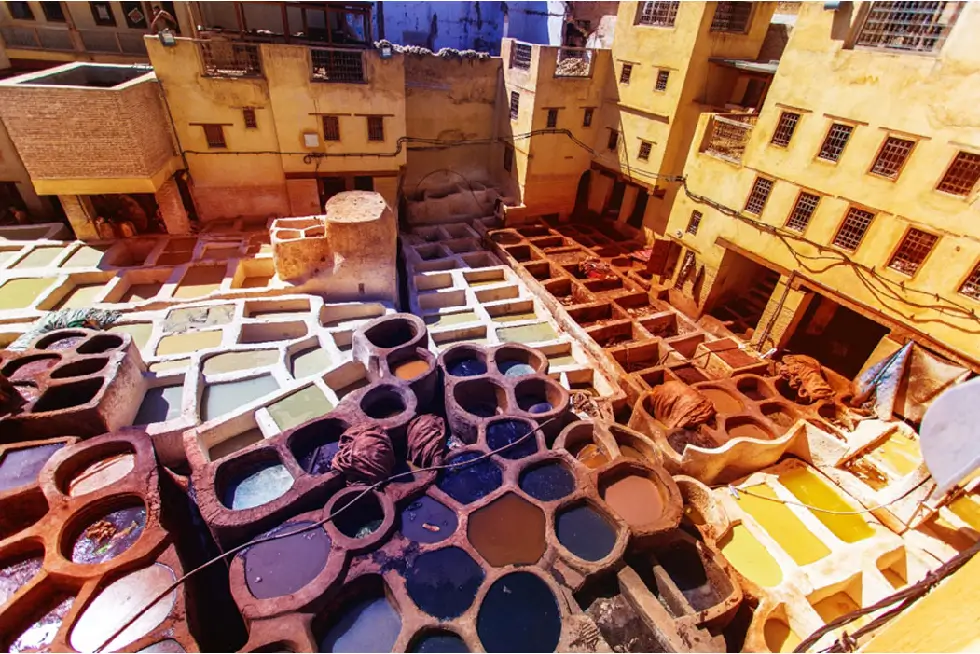

- Traditional Leather Dyeing: One of Fes’s three tanneries, Chouara is known for its ancient methods of leather processing.
Nejjarine Museum of Wooden Arts & Crafts
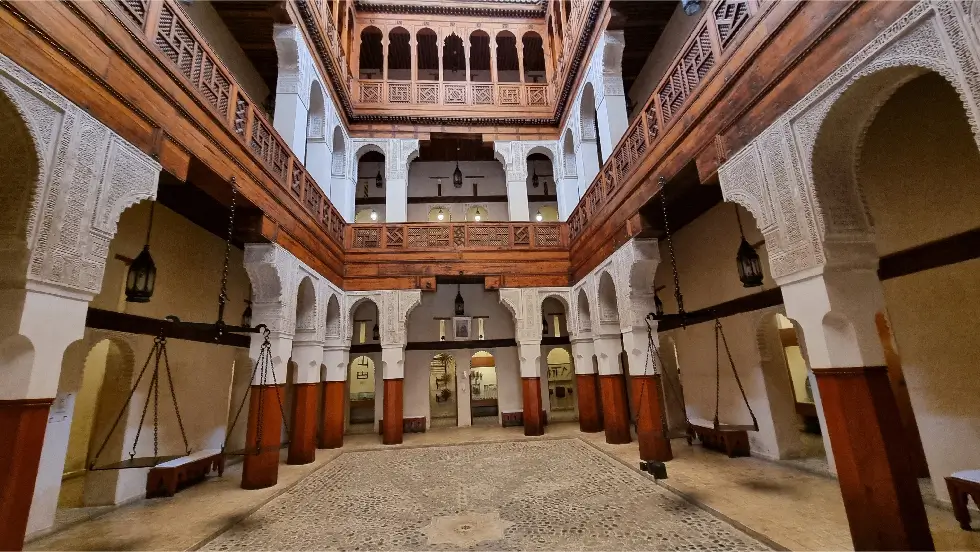

- Celebrating Woodcraft: A museum devoted to the intricate wooden arts and crafts of Morocco, housed in a restored fondouk.
Fes City, with its rich historical and cultural tapestry, offers an array of attractions and activities that promise a fascinating and enriching experience for every visitor.
Fes Transportation System
The transportation system in Fes, Morocco, primarily consists of trains, buses, and taxis, catering to both local and inter-city travel. Here is an outline of the transportation options available in Fes:
- Public Buses:
- The city operates a network of buses that traverse different routes within Fes and its neighboring areas. From Fes Station, passengers can catch buses to various destinations, including the Batha Fountain.
- Additionally, there’s a main bus station located outside of Bab el-Mahrouk, which offers services to other cities in Morocco on a daily basis.
- For those traveling to and from Fès-Saïss Airport, public buses and airport shuttles are available, providing a convenient transport option.
- Train Services:
- Fes houses a central train station in the Ville Nouvelle (new city), from where daily trains connect to major destinations across Morocco.
- These trains are known for their comfort and almost align with European standards, although it’s recommended to book tickets in advance due to the demand for first-class seats.
- There are also direct train services from Fes to cities like Casablanca, offering a comfortable journey with scenic views of Morocco’s landscape.
- Taxis:
- Taxis are a common sight in Fes, providing another mode of transportation within the city. The taxis are categorized into red ‘petit taxis’ and white ‘grand taxis,’ with the former having meters and the latter being ideal for day trips.
- Taxis also serve as a reliable mode of transport to and from Fès-Saïss Airport, which is situated 15 km south of the city center.
- Walking and Personal Vehicles:
- Within Fes, walking is a typical way to get around, especially for short distances. Alternatively, individuals can also use personal cars or cabs to move around the city.
The transportation system in Fes offers a variety of options making it easier for residents and visitors to navigate the city and travel to other parts of Morocco.
Fes Architecture
Fes’s architecture, rooted in the late 8th century, is a blend of Moroccan and Moorish styles, with influences from Berber culture, pre-Islamic Spain, and the Islamic Middle East. Notable structures include madrasas, mosques, fondouks, and palaces, showcasing geometric, arabesque, and calligraphic motifs.



The UNESCO-recognized Medina houses significant Marinid-era structures from the 13th-14th centuries. Prominent mosques like al-Qarawiyyin and Andalusians date back to the 9th century, serving as religious and educational centers. Funduqs, traditional inns for merchants, further enrich Fes’s architectural landscape, with Funduq Nejjarine as a prime example of Moroccan riad architecture, displaying a blend of functionality and aesthetic embellishment.
Fes Economic Significance
“Fes, a city deeply rooted in history and culture, maintains its economic vitality by merging age-old crafts with growing industries. Here’s an in-depth examination of its economic environment:
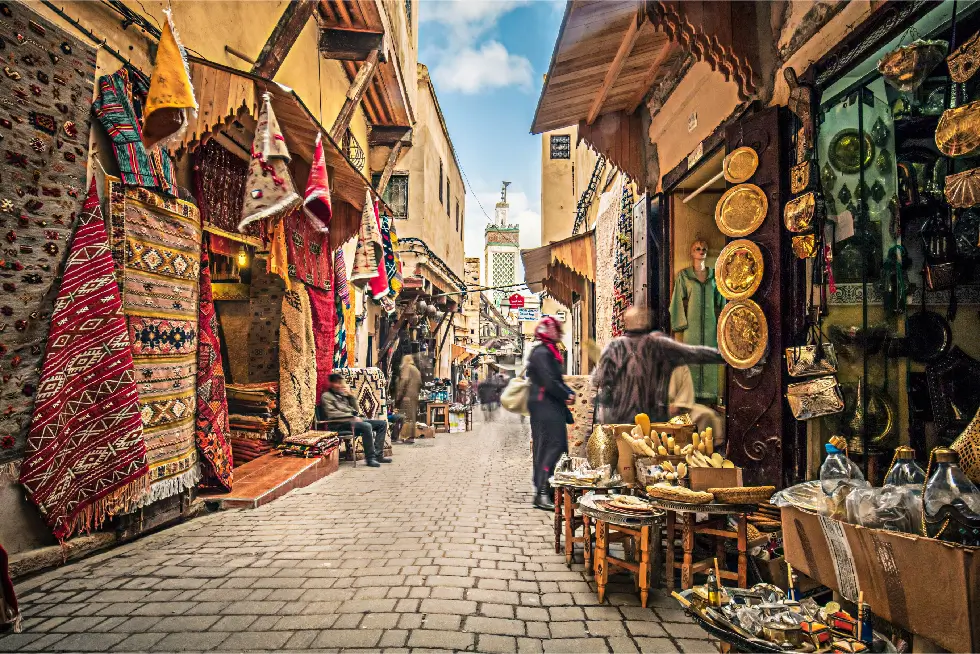

Traditional Crafts:
Famed for its longstanding artisanal practices, Fes plays a crucial role in sustaining these crafts, key to its economic foundation. Prominent among these are leatherworking and pottery, mostly found in the intricate alleys of the historic city. These handcrafted goods are marketed in local souqs, keeping the city’s lively trading spirit alive. Significantly, until the end of the 19th century, Fes was the exclusive manufacturer of the brimless red felt hat, the fez, adding to its unique cultural and economic portfolio. These artisanal activities not only boost the local economy but also safeguard the city’s cultural legacy.
Emerging Sectors:
Tourism in Fes is rapidly expanding, propelled by its status as a UNESCO World Heritage site. The city’s rich history attracts international tourists, providing crucial revenue to the local economy. Furthermore, there’s a noticeable rise in the tertiary sector, especially in offshoring. The region encourages this growth by offering incentives for job creation in the offshoring industry. An agreement between local and regional authorities provides financial support to businesses in the Fez Shore Zone, promoting investment and job opportunities in this field.
Modern Economic Landscape:
The Fez-Meknes region, encompassing Fes, showcases a vibrant, varied economy, making substantial contributions to Morocco’s overall GDP. Strategically positioned as a hub connecting several key economic regions along Morocco’s coastline, the area is integral to the nation’s economic vitality. This economic diversification, moving past traditional crafts and tourism, includes a range of contemporary industries, reflecting a well-balanced economic scenario. The region’s GDP contribution, which stood at 9.4% in 2018, highlights its significance, ranking it fourth in terms of economic output among Morocco’s regions.
Fes’s economic relevance is defined by a delicate balance of preserving historic crafts, adopting new industries, and keeping pace with modern economic movements, thereby securing its role in Morocco’s expansive economic landscape.”
Fes Historical Overview
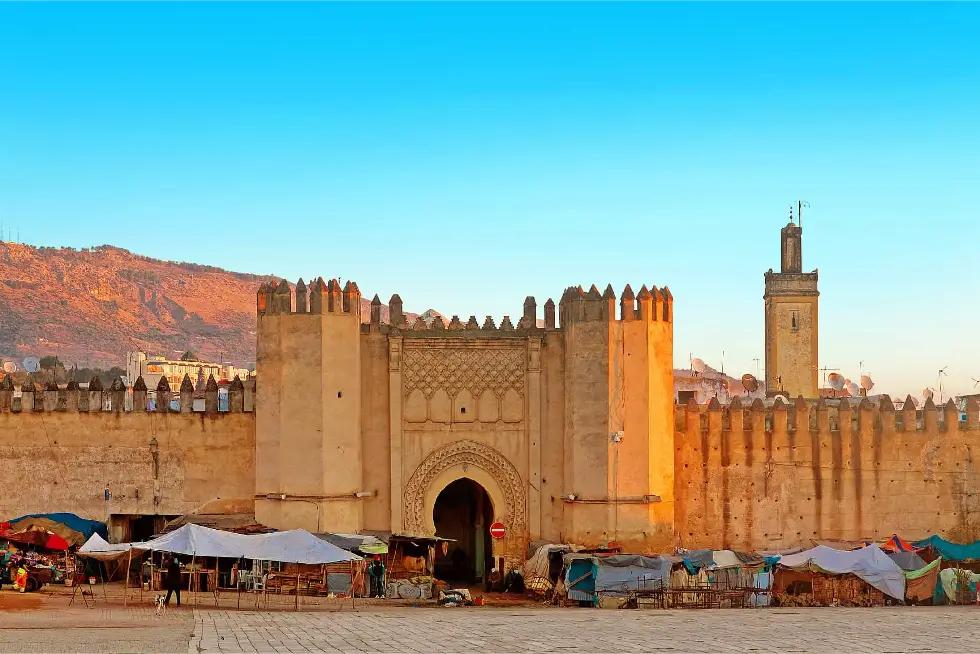

Fes (or Fez) has a rich historical narrative tracing back to its establishment in the late 8th century. The city’s journey through the annals of time reveals a tale of rise, glory, competition, and transformation under varying Islamic dominions. Here’s a structured elucidation of Fes’s historical trajectory:
Fes Early Foundations:
- Establishment: Fes was founded by Idris I around 789 AD on one side of the Wadi Fes, with his successor, Idris II, expanding the settlement on the other bank about two decades later. This was during a period of escape from the Abbasids of Baghdad, with Idris I leading the local Berbers to take control of the region, laying the foundation of the Kingdom of Morocco.
- Consolidation and Expansion: In the 11th century, under the auspices of Almoravid Sultan Yusuf ibn Tashfin, the separate settlements were merged into a unified city. Although Fes later relinquished its status as the capital to Marrakesh, it continued to flourish as a hub of religious learning and trade under both the Almoravids and their successors, the Almohads.
Golden Age of Fes:
- Marinid Dynasty (13th-15th centuries): The era of the Marinids marked a significant epoch in Fes’s history as it regained its position as the political nucleus of the kingdom. The Marinid rulers embarked on an architectural renaissance, constructing numerous madrasas, mosques, and other edifices reflective of Moorish and Moroccan architectural brilliance. They also established a new royal city, Fes el-Jdid, adjacent to the old quarter, Fes el-Bali, enhancing the city’s architectural and political standing.
Decline and Revival of Fes:
- Transitions Post-Marinid Era: Following the decline of the Marinid dynasty, Fes experienced alternating phases of decline and resurgence, often competing with Marrakesh for political and cultural supremacy. The city’s influence was reinvigorated in the 19th century under the ‘Alawi dynasty, holding its status as the capital until 1912. However, the advent of the French Protectorate saw the capital being relocated to Rabat in 1912, leading to a political downturn in Fes. Nevertheless, the French established a new city, Ville Nouvelle, shaping the modern visage of Fes.
The journey of Fes through various historical periods under different Islamic dynasties showcases its enduring importance and transformation, each era contributing to the city’s rich historical and architectural legacy.
Conclusion
In essence, Fes is not merely a city, but a living museum, a blend of the ancient and the modern, ever-resonant with the echoes of its imperial and Islamic heritage. As the capital of the Fès-Meknès administrative region and the second largest city in Morocco, Fes continues to be a significant player in Morocco’s unfolding narrative, while its Medina remains a treasure trove of historical and cultural heritage.
FAQ
Can visitors access the Royal Palace of Fes?
While entry into the Royal Palace (Dar el Makhzen) is restricted, its ornate golden gates and the surrounding areas are accessible for exploration and photography.
What traditional crafts are Fes famous for?
Fes is celebrated for its leatherworking, pottery, and traditional fez hats. These crafts are crucial to the city’s economy and cultural heritage.
What is the best time to visit Fes?
Spring (April to June) and fall (September to November) are ideal, offering pleasant weather and the opportunity to experience the city’s cultural events and vibrant atmosphere.
What makes Fes, or Fez, significant in Morocco?
Fes is Morocco’s second-largest city and one of its four imperial cities. It’s renowned for its rich history, vibrant culture, and unique architecture, stemming from its founding in the late 8th century.
How is the Medina of Fes unique?
The Medina, Fes el Bali, is a UNESCO World Heritage Site and the world’s largest pedestrian zone. It’s a labyrinth of over 9,000 alleys, featuring historic buildings, museums, and lively markets.
What are some must-see architectural sites in Fes?
Visitors should not miss the Al-Andalus Mosque, Medersa Bou Inania, Medersa el-Attarine, and the Bab Boujloud Gate, each showcasing a unique blend of Moroccan and Moorish architecture.
How convenient is transportation in Fes?
Fes offers a range of transport options including buses, trains, and taxis (both petit and grand). The city’s layout also makes walking a feasible option for exploring, especially in the Medina.
Is Fes a good destination for cultural and historical tourism?
Absolutely. Fes’s rich history, architectural sites, and cultural experiences make it a premier destination for those interested in cultural and historical tourism.
What economic role does Fes play in Morocco?
Fes is vital to Morocco’s economy, with its traditional crafts, burgeoning tourism sector, and emerging industries in the tertiary sector, especially in offshoring.
Are there modern amenities and facilities for tourists in Fes?
Yes, Fes is equipped with modern amenities and facilities, including quality accommodations, restaurants, and transportation services, blending historical charm with contemporary comfort.


